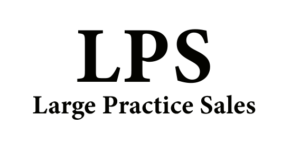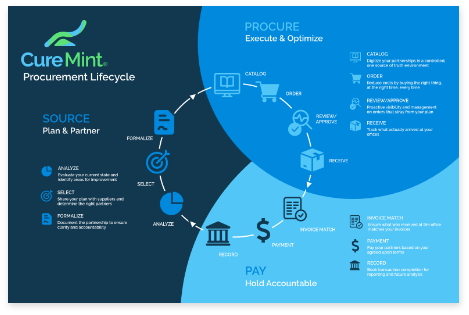An Interview with Matt Wilkins, Owner/Principle of Large Practice Sales
To kick off 2021, we interviewed Matt Wilkins, Owner/Principle of Large Practice Sales (LPS). LPS helps dental organizations and doctors achieve higher evaluations and connect with the right partners for future acquisition initiatives. 
With CureMint’s mission being to help dental organizations scale across North America, naturally, we wanted to hop on the phone with Matt and discuss acquisition strategies and the best way to increase an evaluation in 2021.
CureMint: Tell us a little bit about your background.
Matt: I don’t really have a typical background. In school, I received a master’s in accounting, then decided to go to law school. However, I never really wanted to be an accountant or lawyer. My theory was to know the numbers and rules of business and give myself a healthier chance of being successful in the field. I’ve started and run multiple companies, from e-commerce retail to running a DSO. Currently, I help dentists and dental specialists find capital partners to help them grow and expand their empire and assist doctors in developing an exit strategy that aligns with their wants and goals.
CureMint: Describe a dental organization that might be prime for a valuation. (number of offices, revenue, operational infrastructure)
Matt: Truthfully, there is no one-size-fits-all answer to your question. The perfect office, or group of offices, looking for a valuation depends more on the doctor/management goals vs. where they are in their business cycle (meaning it’s not just about retirement). I believe the prime candidates are twofold: Doctors looking to plan an exit strategy long before their actual exit, or doctors who have a great business plan or vision and want help executing those visions (i.e., capital resources to achieve that vision).
CureMint: Describe exactly what investors are looking for. What attributes are attractive for an investor — how do they get a higher valuation?
Matt: Investors are looking for a consistent return and scalable growth. They are also looking for doctors who are easy to work with. What I mean by being “easy to work with” isn’t that they take direction well or are willing to submit to unwanted change, but instead are open to a collaborative approach on how to run their business. One of the hard-to-quantify things that makes a company more attractive is how scalable the organization actually is, from clinical, procurement, marketing, accounting, and HR standard operating procedures. Basically, standardization and structured operational processes, especially cost drivers, indicate how scalable a practice is, thus warranting a potential higher valuation.
CureMint: How long does a valuation take?
Matt: This question depends on the doctor or organization we are working with, but we target two weeks. Once we have the data we need, we can give a valuation and possible structures for a potential transaction.
CureMint: Are there steps a dental organization can take during the valuation process to bump up their final numbers?
Matt: Specifically, in the valuation process, likely not. Often, doctors look for ways to increase EBITDA, resulting in a higher valuation, but they make cuts detrimental to their overall business. Whereas proper procedural and operational processes, such as supply chain management, should already produce lean expense variables. However, finding a capital partner involves more than just a valuation. The method of finding the right partner can sometimes take six months to a year. During that time, we are continually working with our clients to help them make moves to increase the margins of the business while providing analytical data for all potential partners to look at. This includes refining reports out of accounting or practice management software to offer industry-wide metrics they can benchmark their practice and even recommend new products or services that we believe could benefit the business.
CureMint: How does technology play a role in evaluating a dental organization?
Matt: In what we do for our clients, technology most often helps us access data and analytics. You wouldn’t believe how hard it is to figure out answers to diligence questions partners may have with the current technology and software available in the dental space. On a more subjective level, in my opinion, tech — when used appropriately — often helps bridge the gap between the doctor’s vision and executing that vision.
As it pertains to the valuation, I think technology can play a crucial role in answering scalability questions, which is one of the most critical drivers of a practice valuation after profitability. Private equity groups and invisible DSOs aren’t looking for the great practice that will stay the same forever; they are looking for a business that they can help take the organization to the next level. What’s better is if that business has ideas or practices that would help other practices in the group.
CureMint: How do you measure technology’s impact on a valuation?
Matt: To be honest, it’s really tough. The solutions technology provides don’t always directly correlate to some specific financial metric that an analyst or DSO may be looking for. However, one of the most important things — and where I think LPS stands out from our competitors — is that the story you present or pitch to potential partners is often the difference between an extraordinary value and a traditional value. Our process adds real value! There are many successful practices in the dental space… so how do you set yourself and your practice apart from other practices? I think technology can play a crucial role here. While it may be tough to give a direct numerical impact to valuation if you have two business and both have substantially the same P&L, but through the use of technology, one has fewer employees, more access to data to make business decisions, and is all-around a more efficient enterprise, I can assure you: Not only is it worth more; there will be many more interested bidders for the practice.
The single most significant thing you can do that can drive up the practice’s value is to have a business that attracts more bidders. I think technology can play a crucial role in establishing this “attractiveness.”
CureMint: Can you give us an example of a valuation/acquisition gone right/wrong?
Matt: I’m going to provide you with two examples that may surprise you.
Conducive acquisitions are about picking the right partner. Probably one of my happiest clients to date is in an extremely rural area in the US. The doctor felt like he was alone in his practice and felt like he couldn’t grow to his potential, given his area of operation. We helped him find a geographically agnostic partner. He sold 60% of his business and retained 40%. His new partner helped him supercharge his growth, and now they have four locations. The cool thing is, his 40% retained equity is worth vastly more than 100% of his original practice. On the flip side, one of the worst acquisitions I have ever been a part of was a doctor who had a few specialty practices and somewhat of a checkered background that he attempted to hide from everyone in the process. We helped this doctor find not only one, but two great partners. Unfortunately, during the thorough background check that is a standard process, it became evident that the doctor lied about his past and attempted to conceal it. So, while we were able to achieve a tremendous initial valuation, the diligence process crushed any hope this doctor ever had of doing a deal.
For whatever reason, this industry tends to be quite secretive, and I’ve learned that transparency tends to be a much better tactic for a seamless valuation/acquisition!
CureMint: Describe how CureMint can help increase your valuation.
Matt: I want to answer this question in two parts.
Suppose you are a larger organization or group practice. In that case, CureMint can streamline your purchasing process and allow you to access analytics that is typically exceedingly difficult to obtain, if not impossible. The data and visibility CureMint offers empowers group practices to make cognitive decisions and action plans towards mitigating their supply costs; while simultaneously facilitating better cash flow management. CureMint can also prevent an ordering assistant, in most cases in each office, spending 50% of their time scrolling through catalogs searching for supplies or logging in and out of multiple supplier ordering portals.
Perhaps one of the most compelling arguments for a fast-growing group is that CureMint allows you to onboard practices more efficiently and better than any other solution I have seen as it pertains to the purchasing process. Enabling you to alleviate an integration pain point for the doctor and staff you are looking to acquire. On the opposing side, if you are a small group, one doctor, or fewer offices, you might think you don’t need the data or analytics that CureMint can provide. This is where CureMint’s GPO partner, SourceClub, really shines through. SourceClub provides small practices the same, and in most cases, better purchasing power than larger DSO’s receive. SourceClub offers additional value by eliminating the need for a smaller organization to spend the energy and time negotiating their own pricing with suppliers. Typically, smaller organizations don’t have the buying power or economies of scale to drive substantial supply costs reductions. I’ve been really impressed with the CureMint product, the team behind it, and the executive level experience that their GOP leadership has. I’m quite confident that if utilized fully, CureMint can help any dental organization out there.
To learn more about LPS visit their website at https://www.largepracticesales.com/
Related Blogs
How to Get Started with Dental Spend Management When You Don’t Know Where to Start
09.30.21
For rapidly growing dental service organizations (DSOs), the…
Not All Dental Costs Are Equal: Which One Are You Focusing On?
09.27.21
It doesn’t matter whether you’re whitening teeth or selling…
The Best Way to Increase Productivity for Your Dental Assistants
09.21.21
In many ways the lead dental assistant at your dental practice…





